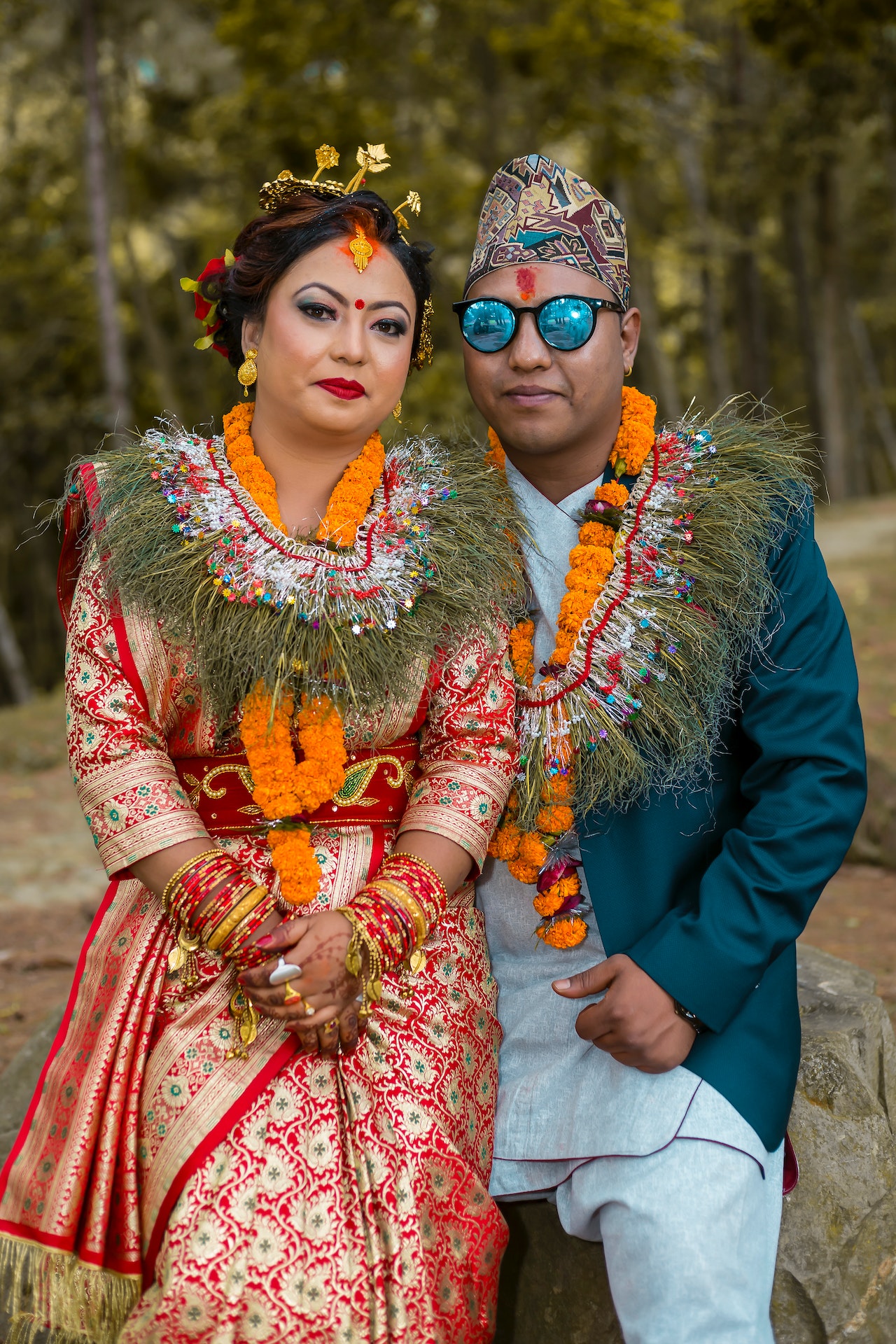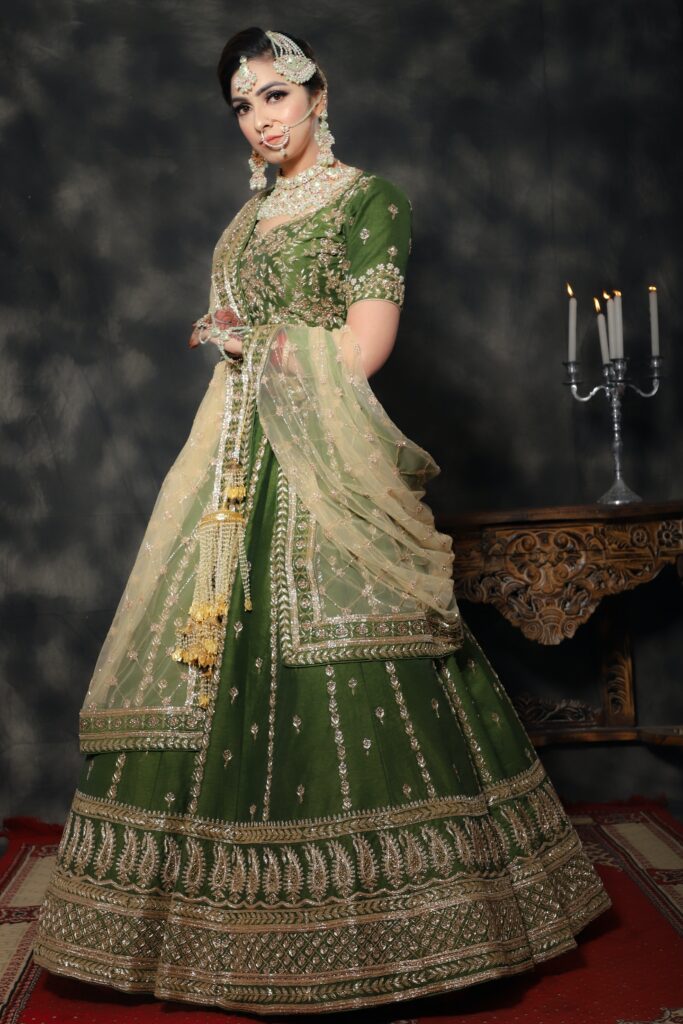- The Mekhla Cotton saree is a traditional handwoven saree that is native to the state of Assam, located in Northeast India. It is known for its unique style and features, which make it stand out from other sarees in India.
- The Mekhla Cotton saree is made from cotton fabric and is typically woven by hand on a traditional loom. The saree is made up of two main parts: the Mekhla, which is the lower part of the saree, and the Chador, which is the upper part. The Mekhla is typically pleated and worn around the waist, while the Chador is draped over the shoulder and covers the upper body.
- One of the most distinctive features of the Mekhla Cotton saree is the intricate embroidery and weaving that is often found on the saree. This can include patterns and designs that are inspired by nature, such as flowers, leaves, and birds, as well as more abstract geometric patterns.
- The Mekhla Cotton saree is popular among women in Assam and is often worn for special occasions such as weddings, festivals, and religious ceremonies. It is also gaining popularity in other parts of India and around the world as a unique and beautiful style of saree.
There are various types of Mekhla Cotton sarees that are native to Assam, each with its own unique style and features. Here are some of the most popular types:
- Traditional Mekhla Cotton saree: This is the most common type of Mekhla Cotton saree and is characterized by its simple yet elegant design. It is typically made from cotton fabric and features intricate weaving and embroidery work along the borders.
- Pat Silk Mekhla Cotton saree: This type of saree is made from a blend of silk and cotton fabrics and is known for its luxurious look and feel. It features a wide range of designs, including traditional motifs and modern patterns.
- Muga Mekhla Cotton saree: Muga is a type of silk that is native to Assam, and Muga Mekhla Cotton sarees are made from a combination of Muga silk and cotton fabrics. These sarees are known for their durability and lustrous appearance, and often feature intricate embroidery work.
- Eri Mekhla Cotton saree: Eri silk is another type of silk that is produced in Assam, and Eri Mekhla Cotton sarees are made from a blend of Eri silk and cotton fabrics. These sarees are known for their soft and comfortable feel, and often feature simple yet elegant designs.
- Tribal Mekhla Cotton saree: Tribal Mekhla Cotton sarees are characterized by their bold and colorful designs, which often feature geometric patterns and tribal motifs. They are typically made from cotton fabrics and are popular among young women in Assam.
These are just a few examples of the different types of Mekhla Cotton sarees that are native to Assam. Each type has its own unique features and style, and all of them are known for their beauty and elegance.

Top mekhla saree
1.SKiran’s Assamese AC Cotton Mekhela Chador Saree – Dn8106 Mekhla Sador (Skyblue)
- Care Instructions: Hand Wash Only
- Chador: 2. 75 Meters Machine-Weaving AC Cotton
- Un-Stitched Mekhla: 1. 75 Meters Machine-Weaving AC Cotton
- Un-Stitched Blouse piece: 0. 75 Meter Machine-Weaving AC Cotton
- Package contents: 1 chador, 1 mekhela and 1 blouse
- This item is NOT a Saree. It’s an Assamese Traditional Wear called Mekhela Chador which comes in two separate pieces – Chador (worn on top half of the body), Mekhela (worn on bottom half of the body)
2.S Kiran’s SKiran’s Assamese Cotton Mekhela Chador Saree – Dn24 Mekhla Sador (Yellow), Multicolour
- Care Instructions: Hand Wash Only
- Chador: 2. 75 Meters Machine-Weaving AC Cotton
- Un-Stitched Mekhla: 1. 75 Meters Machine-Weaving AC Cotton
- Un-Stitched Blouse piece: 0. 75 Meter Machine-Weaving AC Cotton
- Package contents: 1 chador, 1 mekhela and 1 blouse
- This item is NOT a Saree. It’s an Assamese Traditional Wear called Mekhela Chador which comes in two separate pieces – Chador (worn on top half of the body), Mekhela (worn on bottom half of the body)
- Weave type: Plain weave
3.
Disclaimer: The content provided on Incredible Sarees’ blog is for informational purposes only. The information presented is based on our knowledge and understanding of sarees as of September 2023, and it may not reflect the latest trends, styles, or industry updates.
The blog posts on Incredible Sarees are intended to provide general information and guidance regarding sarees, including tips on styling, fabric types, draping techniques, and fashion advice. However, it is important to note that fashion trends are constantly evolving, and individual preferences may vary.
While we strive to ensure the accuracy and reliability of the information provided, Incredible Sarees cannot guarantee the completeness, timeliness, or accuracy of the content. Therefore, we advise readers to use their discretion and consult other reputable sources or professionals for specific recommendations and personalized advice.
Incredible Sarees’ blogs may contain external links to third-party websites or resources. These links are provided for convenience and do not imply endorsement or responsibility for the content or services offered on those websites.
The views and opinions expressed in the blog posts are those of the authors and do not necessarily reflect the views of Incredible Sarees as a whole.
Incredible Sarees reserves the right to modify, update, or remove any content on the blog without prior notice. We also reserve the right to change the focus, format, or content of the blog at any time.
By using the information provided on Incredible Sarees’ blog, you acknowledge and agree to the above disclaimer. We encourage readers to engage with us, share their feedback, and contribute to the discussions respectfully.
For any specific concerns or inquiries regarding the content on Incredible Sarees’ blog, please email us at [email protected]


